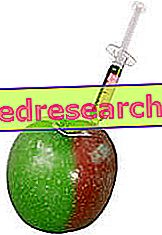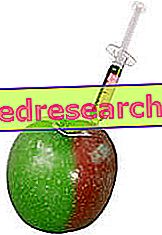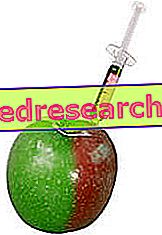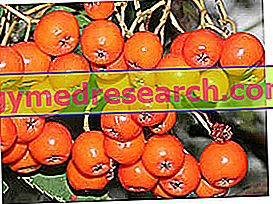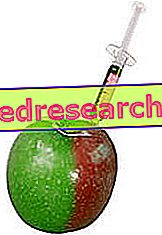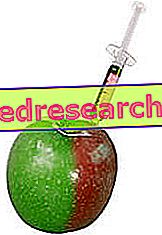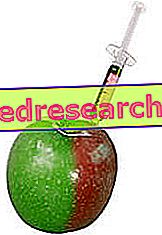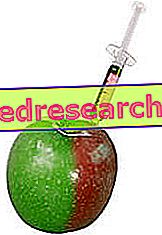E160e BETA-APO-8'-CAROTENAL (C30) Beta-apo-8-carotenal is a dye of natural origin, chemically modified, orange-red, with antioxidant properties. It can be contained in sweets, in condiments and in food supplements. It currently appears to be harmless. ADI DOSE: 5 mg per kg of body weight. E100 E101 E101a E102 E104 E110 E120 E122 E123 E124 E127 E128 E129 E131 E132 E133 E140 E141 E142 E150a E150b E150c E150d E151 E153 E154 E155 E160a E160b E160c E160d E160e E160f E161 E161a E161b E161c E161d E161e E161f E161g E162 E163 E170 E171 E172 E173 E174 E175 E180
Category food additives
Sodium sorbate is the sodium salt of sorbic acid (E200). Being a salt, sodium sorbate is very soluble, and for this reason it is frequently used; its activity is similar to that of sorbic acid, therefore it can be contained in: pastry products, yoghurts and other fermented dairy products, fruit salads, cheeses, rye bread and other bakery products, pizza, crustaceans and molluscs, wine, cider and soups
Benzoic acid is a preservative derived from benzene, an aromatic hydrocarbon that appears at room temperature as a colorless liquid that evaporates very quickly in the air. Benzoic acid, in nature, is found in free or combined form; it can be obtained from natural sources, in fact for example it is present in benzoin (see photo), in balsam of Peru and Tolù, in other balms, in prunes, in yogurt, but in practice it is produced by chemical synthesis starting from anhydride phthalic.
Sulfur dioxide or sulfur dioxide is a colorless gas with an irritating odor (reminiscent of "rotten eggs") and extremely soluble in water, which is produced by burning sulfur when it comes into contact with air. It can be used as such or in liquid form, while sulphites appear as powders. In ancient times sulfur dioxide was used to disinfect fermentation vats, but it is only since 1920 that sulphites are used with some frequency during the preparation of food and drinks
Sorbic acid is a preservative of natural origin (in nature it is found in the fruits of Sorbus aucuparia and in other Rosaceae), which can be produced synthetically (like the one commonly used in industries). It has a very low toxicity: this is because it is used in reduced doses (0.2 mg / Kg), and because its LD50 is over 5g / Kg
ADI DOSE: 0.7 mg per kg of body weight. E200 E201 E202 E203 E210 E211 E212 E213 E214-E2119 E220 E221 E222 E223 E224 E225 E226 E227 E228 E230 231 E232 E233 E234 E235 E236 E237 E238 E239 E240 E242 E249 E250 E251 E252 E260 E261 E262 E263 E270 E280 E284 E285 E290 E296 E297
Sodium sulfite is the sodium salt of sulphurous acid. It occurs at room temperature as a white, unstable powder that forms sodium sulfate reacting with oxygen. Sulfurous acid originates in the presence of acids. Sodium sulfite is mainly used as a preservative, as well as a decolorizing and oxidizing agent
Sodium metabisulfite is a sodium salt of sulphurous acid. It occurs at room temperature as a white, unstable powder that forms sodium sulfate reacting with oxygen. Forms, in the presence of acids, sulphurous acid. ADI DOSE: 0.7 mg per kg of body weight. E200 E201 E202 E203 E210 E211 E212 E213 E214-E2119 E220 E221 E222 E223 E224 E225 E226 E227 E228 E230 231 E232 E233 E234 E235 E236 E237 E238 E239 E240 E242 E249 E250 E251 E252 E260 E261 E262 E263 E270 E280 E284 E285 E290 E296 E297
Potassium metabisulfite is a potassium salt of sulphurous acid. It appears, at room temperature, as a white, unstable powder that forms potassium sulfate reacting with oxygen. In the presence of acids, it forms sulphurous acid. Potassium metabisulfite is mainly used as a preservative, as well as a decolorizing and oxidizing agent
Sodium bisulfite is a sodium salt of sulphurous acid. It occurs at room temperature as a white, unstable powder that forms sodium sulfate reacting with oxygen. In the presence of acids it forms sulfuric acid. Sodium sulfite is mainly used as a preservative, as well as a decolorizing and oxidizing agent
Calcium bisulfite is the calcium salt of sulphurous acid. It comes in the form of greenish liquid, which forms calcium sulphite by chemical reaction. In the presence of acids, it forms sulfuric acid. It can be present, as a preservative, in the production of beer. Furthermore, it increases the stability of canned vegetables

